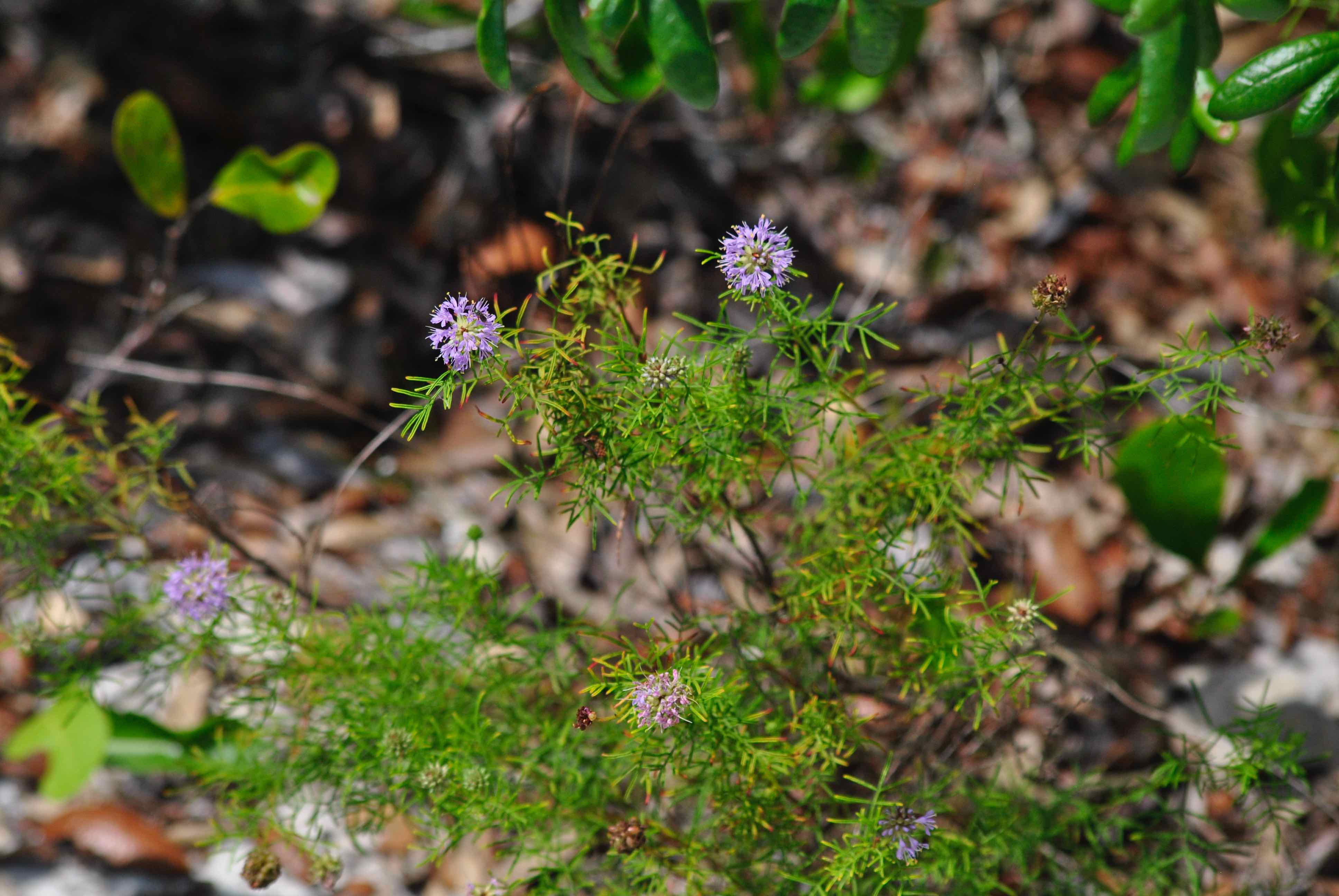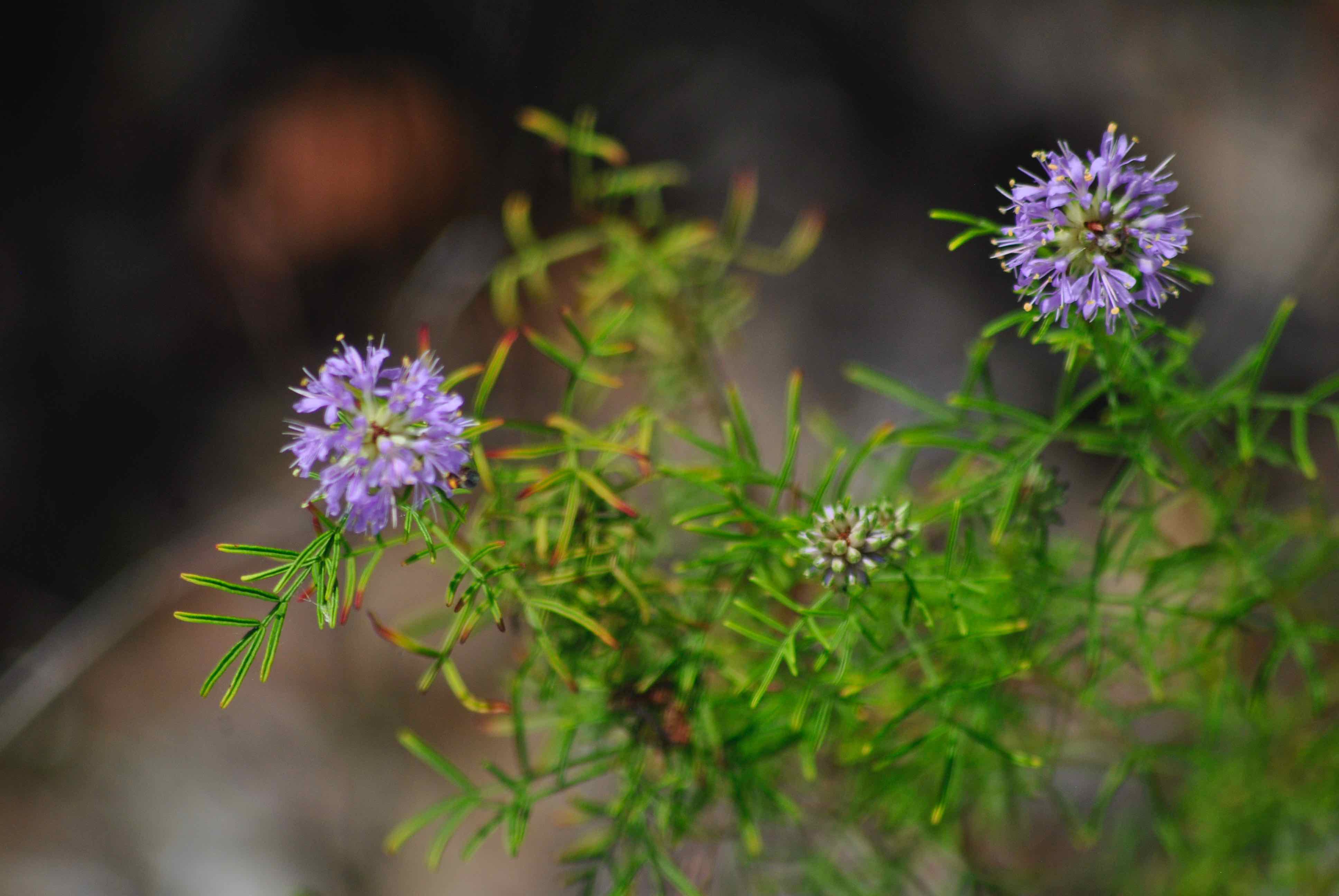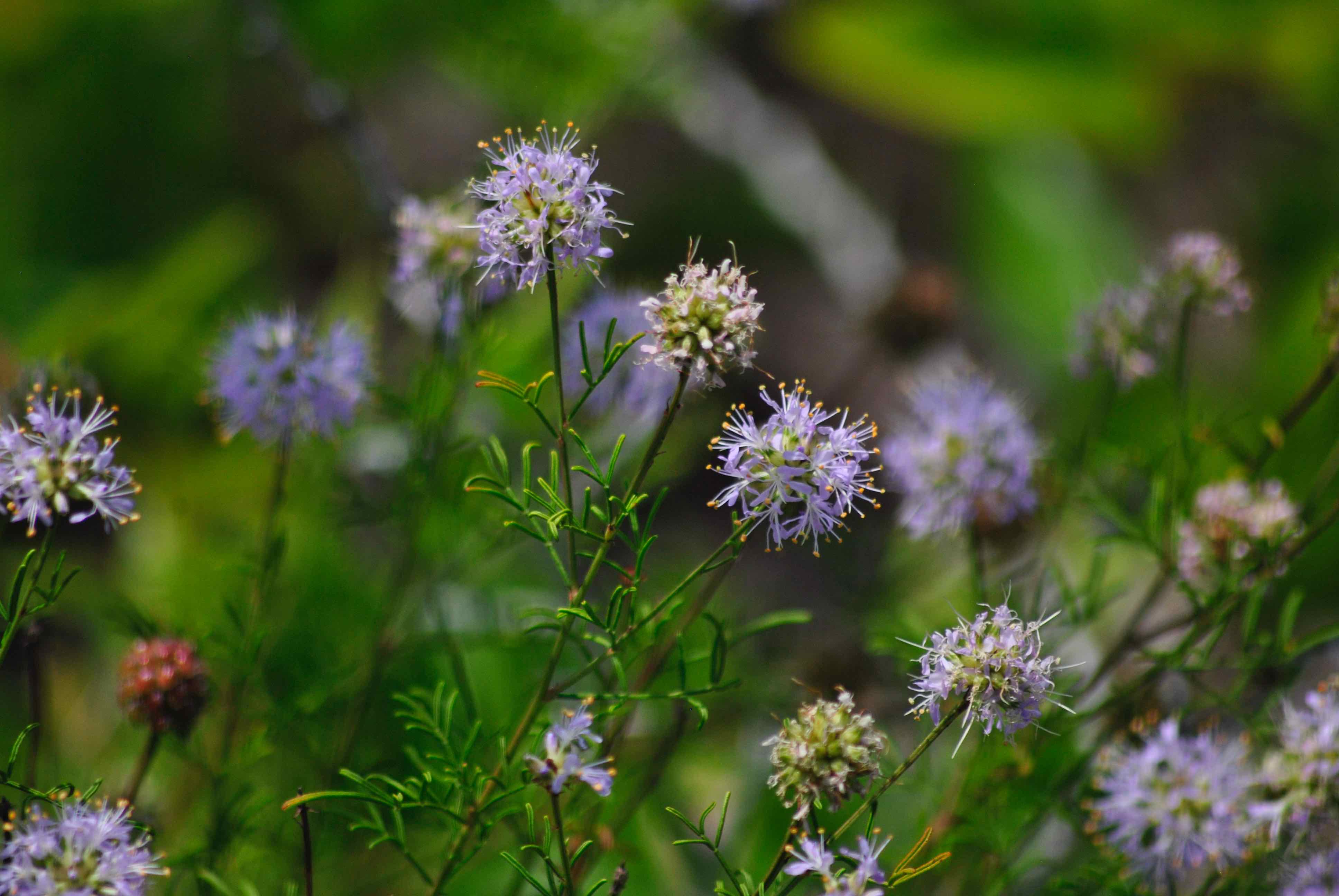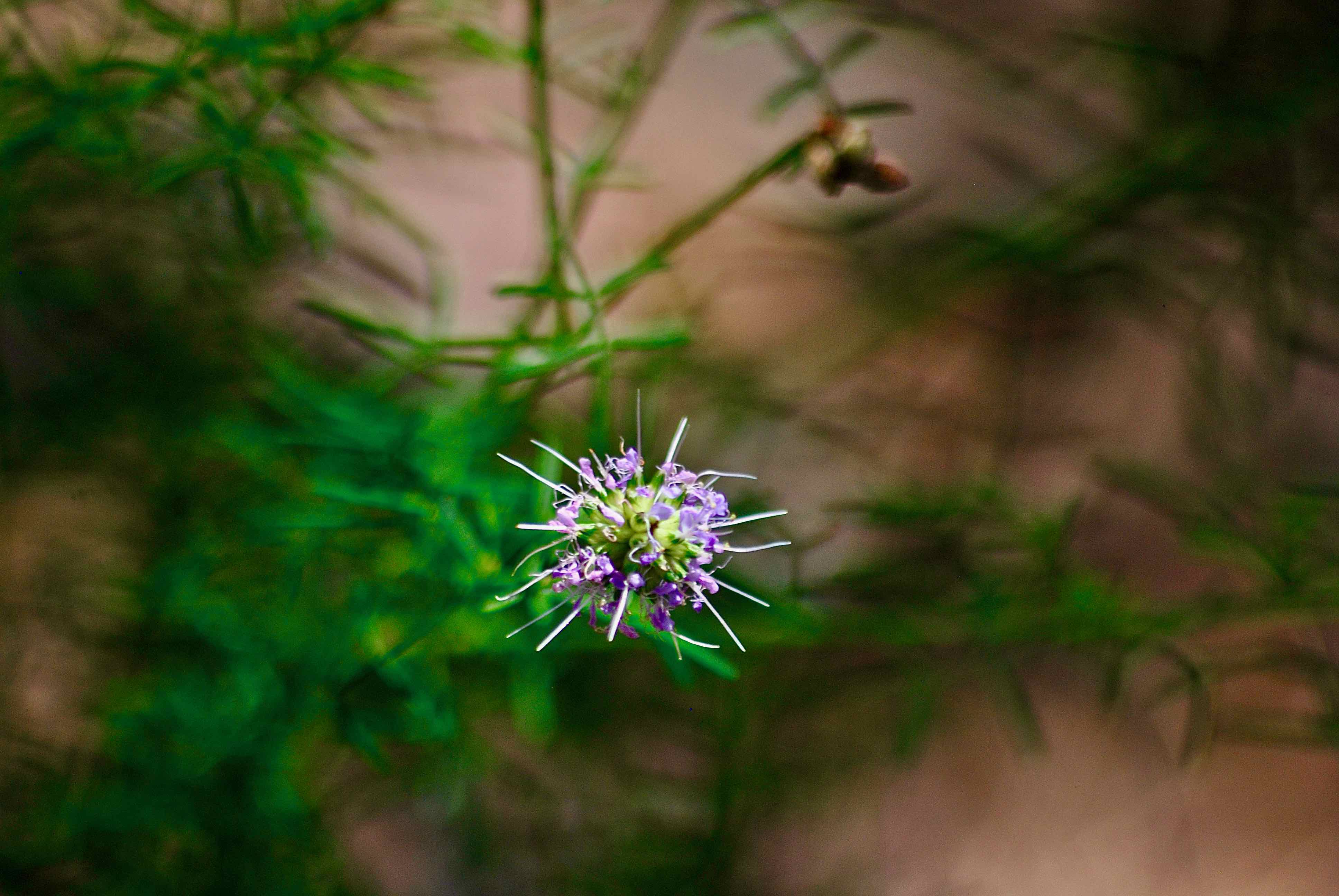
Feay's prairieclover, photographed at Seabranch Preserve State Park, Stuart, Martin County,in May 2015.
The name might suggest that this is a plant of the Midwest. Many prairieclovers are. Feay's prairieclover, Dalea feayi, however, is almost exclusively found in the Sunshine State.
It is a Florida native, found along the Atlantic Coast, Central Florida, portions of the Gulf Coast and a couple of counties in the Panhandle. Feay's prairieclover also has found a home in one county in southeastern Georgia, according to the folks who run the PLANTS database at the U.S. Department of Agriculture.
The plant itself is shrubby, with woody stems and compound leaves that are narrowly divided and look similar to some members of the mint family. In fact, some say the leaves have a minty aroma to them. But this is not a mint.
Feay's prairieclover typically grows between 18 and 30 inches high, generally erect and round in shape. The flowers, which can be white, pink or violet, are individually small but grow in large, conspicuous heads that can stay on the plant for several weeks. They bloom in summer and fall and at their peak they can cover the plant. Eventually, they give way to reddish seed heads. It is a short-lived perennial.
It is a rare plant, growing in scrubs and scrubby flatwoods, but it is not classified as threatened or endangered either in Florida or Georgia. Feay's is one of four prairieclovers native to Florida.
The Institute for Regional Conservation considers it "imperiled" in South Florida, although we suspect it's because the habitats where it's found are becoming increasingly imperiled because of development. Sources we've seen consider it "apparently secure" from a "global" perspective (meaning, in this case, other parts of Florida).
It is cultivated on a limited basis, but Feay's is finicky about soil conditions, requiring extremely well-drained sand in order to grow. It also likes it on the acidic side. Craig N. Huegal of the Hawthorne Hills Nursery and author of the Florida Wildflowers blog says he's only had success growing Feay's in pure scrub sand. Feay's likes sun but will tolerate some shade
Feay's prairieclover is considered an important source of nectar for native bees, but butterflies, not so much. On the other hand, the southern dogface butterfly does use it as a host plant for its caterpillars. The seeds are eaten by some birds and other small animals.
As we said earlier, Feay's is not a member of the mint family, but rather Fabaceae, the pea family (We've also seen it classified as a member of Papilionaceae). Other common names include globe-headed prairieclover, globe-headed prairie clover, Feayi pink-tassels and Feay's prairie clover.
Click on photo for larger image
Links for Feay's Prairieclover



